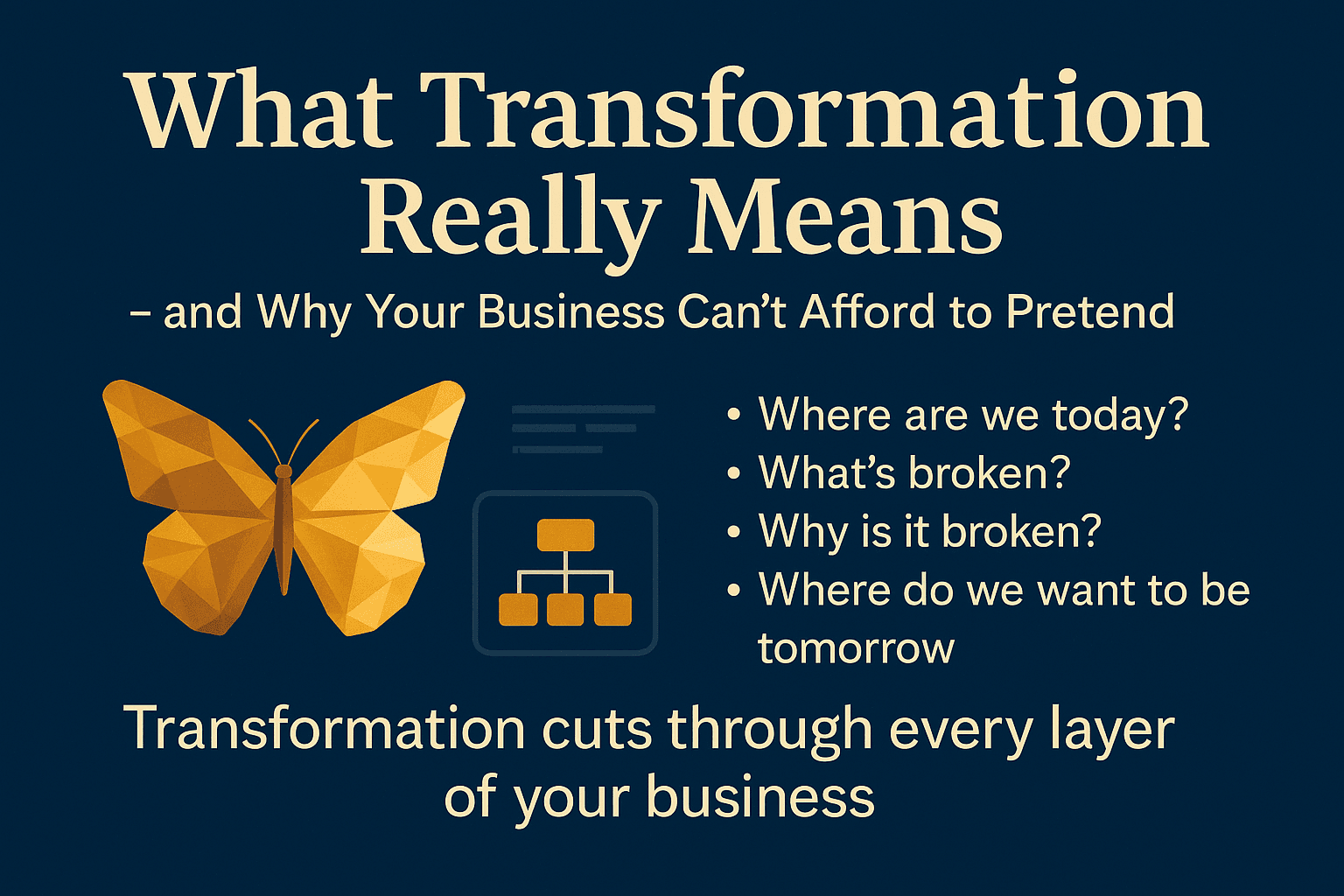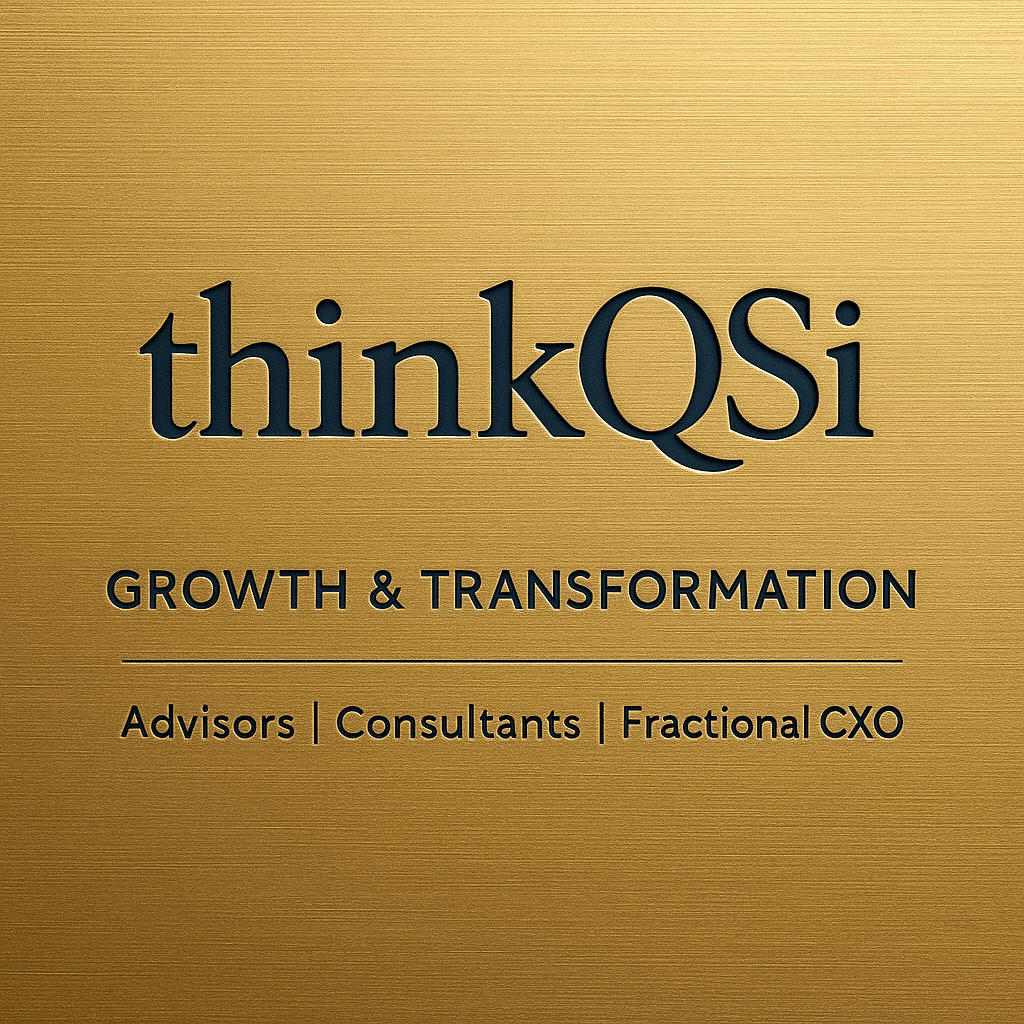What Transformation Really Means and Why Your Business Can’t Afford to Pretend
trans·for·ma·tion
/ˌtran(t)sfərˈmāSHən/
noun
a thorough or dramatic change in form or appearance.
"its landscape has undergone a radical transformation"
a metamorphosis during the life cycle of an animal.
---
Everyone talks about transformation like it’s a new app you can download overnight. It’s not.

True transformation upends the way your company thinks, operates, and collaborates. It’s not a new organizational chart, snappy job titles, or a quick reshuffle. Those are just surface fixes that mask deeper issues.
Real transformation starts with hard truths:
- Where are we today?
- What’s broken?
- Why is it broken?
- Where do we want to be tomorrow?
If you can’t answer these honestly, you’re not transforming. You're pretending.
Transformation cuts through every layer of your business:
- How you buy and sell,
- How you serve your customers,
- How you treat your people,
- How you decide.
It flows through your supply chain, your partners, your systems; the very fabric of your company.
And it’s not a memo from the CEO. It’s a team effort. Every person, from the boardroom to the front lines, either drives the change forward or keeps it stuck.
Yes, it’s uncomfortable. It forces you to confront habits, structural weaknesses, and expose blindspots. But that’s the price for real progress.
If you want transformation to work, you need:
- Clarity of vision: Every single person must understand where you’re headed.
- Leadership commitment: Real, visible backing, not just slogans.
- Buy-in from the people: Because they make it happen every day.
Transformation isn’t a project. It’s a journey. Messy. Tough. Worth it.
When done right, your company won’t just run better, it will be better.
What Real Transformation Looks Like for an SMB of 100 Employees and $52M Revenue
The Status Quo:
This company has been around for 20 years, but growth has stalled. Leadership feels reactive, always fighting fires. Morale is eroding. There are no meaningful productivity metrics. Automation? KPI tracking? No system exists. Profits are unclear but assumed “good enough.” Vision and mission exist only in slide decks, not in everyday language or behavior. Some employees have been with the company forever, but overall turnover is high, exceeding industry averages.
The Transformation Journey:
- Grounding in Reality
- Conduct an honest assessment led by leadership and an external advisor: uncover bottlenecks, morale issues, gaps in data, and process weaknesses.
- Facilitate candid conversations to surface root causes of stagnation.
- Create a Clear Vision & Mission
- Collaborate with leadership and key employees to develop an inspiring, realistic vision and mission that everyone can rally behind.
- Make these living statements—integrate them into daily operations, communications, and decision-making.
- Leadership Alignment and Ownership
- Develop a transformation leadership team across departments with authority and accountability.
- Provide leadership coaching to shift mindsets from firefighting to strategic enabling.
- Data-Driven Foundation
- Implement foundational KPI systems: for productivity, customer experience, employee engagement.
- Start with simple dashboards visible company-wide to build a culture of transparency and accountability.
- Process Automation and Efficiency
- Identify high-impact manual tasks and automate them using scalable, user-friendly tools.
- Redesign workflows to reduce duplication and improve cross-team collaboration.
- Culture Renewal
- Launch initiatives to boost morale: recognition programs, professional development, transparent communication forums.
- Address turnover by improving onboarding, clarifying career paths, and fostering inclusion.
- Ongoing Measurement & Adaptation
- Schedule regular “health checks” on transformation progress linked to KPIs and employee sentiment.
- Adjust tactics in response to data and feedback—transformation is iterative.
The Result:
After 18-24 months, this company isn’t just surviving, it’s thriving:
- Leadership spends less time firefighting and more on growth strategies.
- Employee engagement rises, turnover drops below industry averages.
- Productivity data flows in real time, guiding decisions.
- Customer satisfaction improves as teams collaborate more effectively.
- Clear profit metrics enable smarter investments and cost controls.
- The company moves confidently into new markets with a culture built on continuous improvement.
This shift unlocks new growth while preserving the company’s soul; valued employees, loyal customers, and a resilient foundation for the next 20 years.
---
Insights from Anwer Qureishi, Thought Leader & Entrepreneur
Ready to accelerate growth? Schedule a Consultation with Anwer Qureishi, Founder, Q&S International (ThinkQSi).
